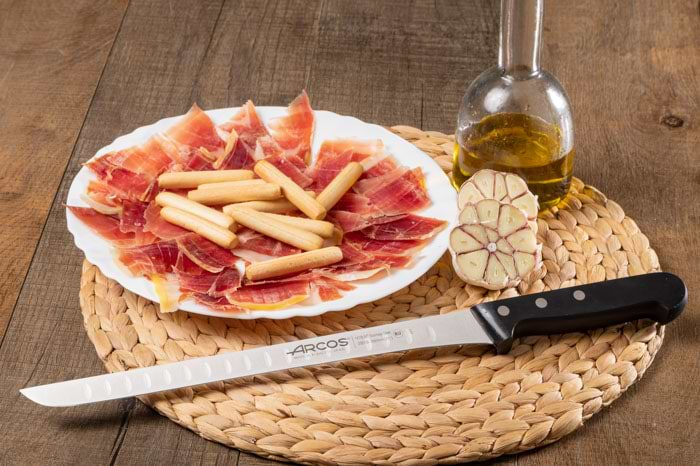Knives with dimples: Do they really prevent food from sticking to the knife?
Knives with Grantons: Do they really prevent food from sticking to the blade?
We have good news for you. There are knives available that can help ensure this never happens again. Yes, you heard correctly. Thanks to granton-edge knives, designed specifically to make cutting easier and more comfortable in your kitchen. If you haven’t heard of them yet, stay with us, because we’re going to explain in detail exactly what they are and what advantages they offer compared to traditional knives.
Granton-edge knife: What is it and what is it used for?
Granton-edge knives are easily recognised by their small grooves or indentations—known as grantons or cavities—on both sides of the blade. Contrary to what one might assume, these notches aren’t decorative; they’re there for a very important reason.
Granton indentations create tiny air pockets between the knife and the food, reducing friction and stopping slices from sticking so easily. The result is clear: much cleaner, quicker and more comfortable cutting for the cook.
In case you’re curious, the granton design isn’t mere coincidence. It’s inspired by Japanese tradition, where precise cutting is essential—especially when preparing dishes like sushi and sashimi. Japanese knives are models every kitchen should have, ensuring clean, perfect and delicate cuts.
Ultimately, a granton-edge knife helps prevent food from sticking to the blade, making it an excellent ally, especially when working with softer, wetter or thinner ingredients.
Types of granton-edge knives: Main uses and benefits
- Vegetables: Perfect for cutting courgettes, aubergines or tomatoes without the slices sticking to the blade.
- Raw fish: Ideal for lovers of sushi and sashimi—these Japanese knives allow you to cut delicate pieces with great precision, without tearing the flesh.
- Soft cheeses: From brie to camembert, which tend to stick, these knives help the cheese glide smoothly as you cut.
- Cooked meats and charcuterie: The best option for slicing ham, roast beef or other cured meats paper-thin, without the slices sticking.
The key benefit is efficiency; you’ll spend less time separating stuck slices and enjoy more uniform cuts.

Maintenance of granton-edge knives
- Cleaning: It’s best to wash them by hand with warm water and mild soap. By avoiding the dishwasher, you’ll help preserve both the edge and the blade.
- Sharpening: Grantons don’t interfere with sharpening, but it’s always a good idea to use suitable tools to maintain the correct angle.
- Storage: It’s preferable to keep knives in blocks, protective sheaths or on magnetic strips to avoid knocks between blades and ensure they last longer in excellent condition.
- Handle care: If the handle is made of wood, remember it needs extra attention to keep it from deteriorating due to moisture.
Tips for Choosing the Best Granton-Edge Knife for Your Kitchen
Owning a granton-edge knife is not just a whim; it dramatically improves your cutting experience. Take a look at our collection of knives with these features at Arcos and choose the one that best suits you and your cooking style.


